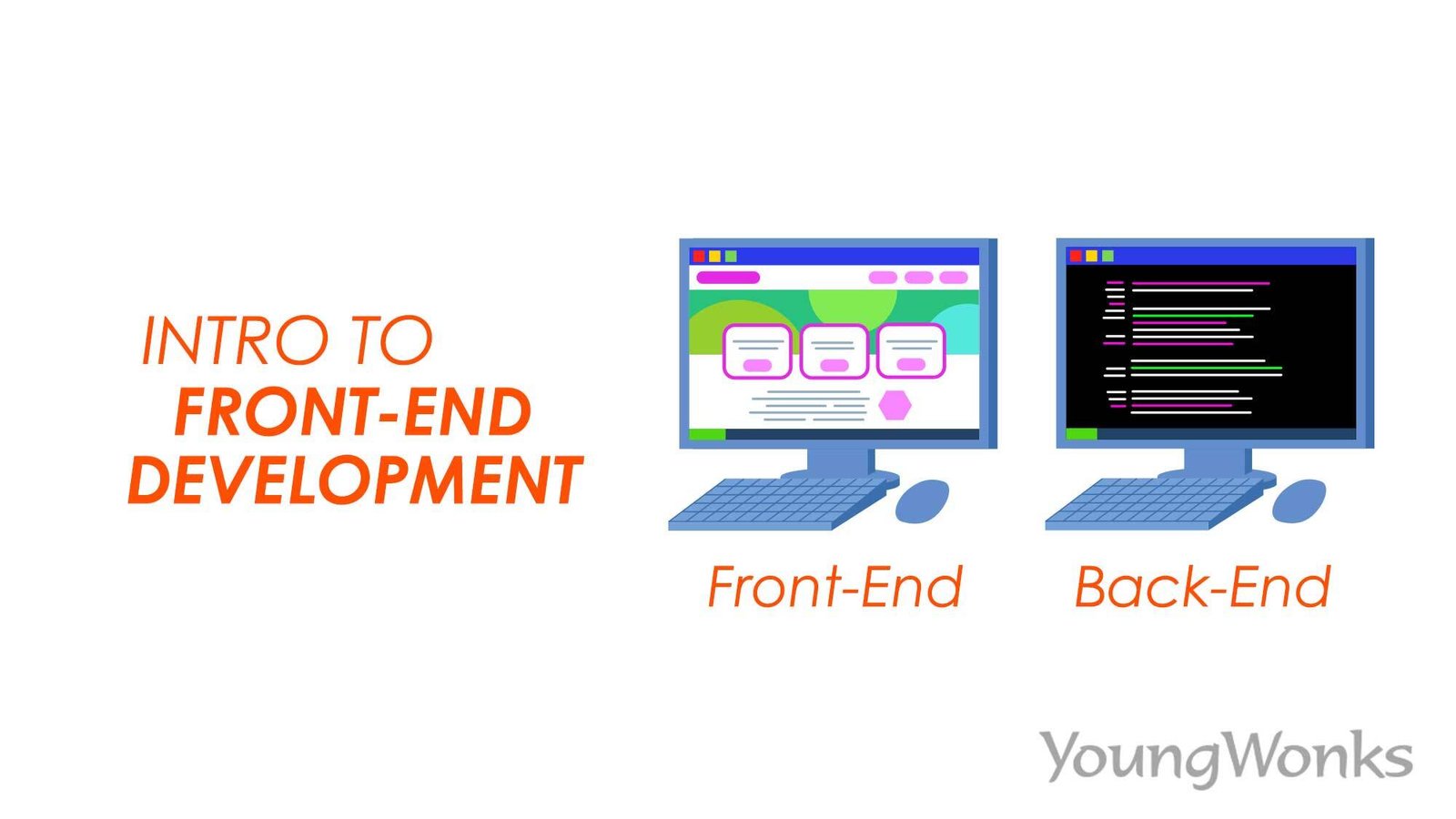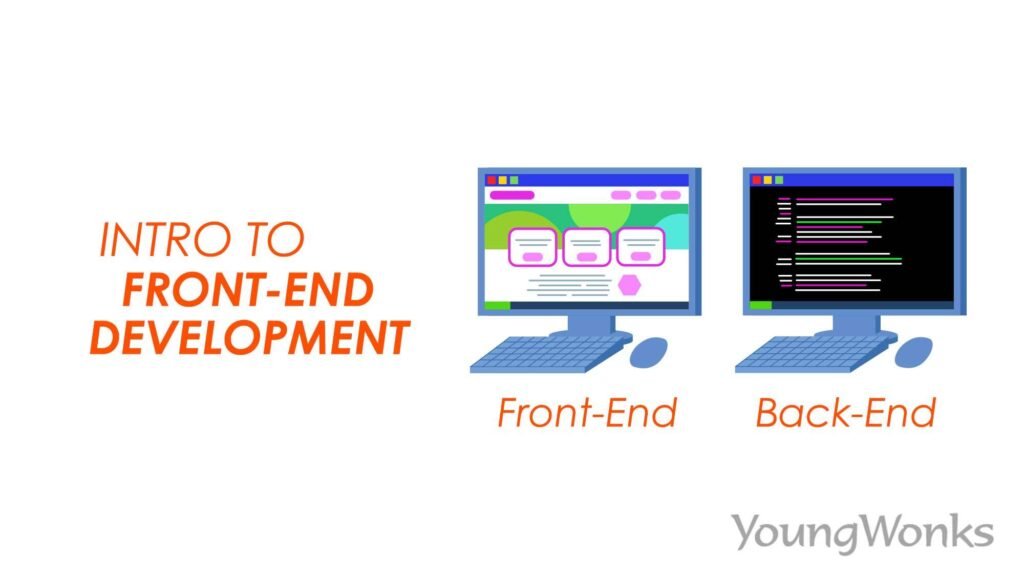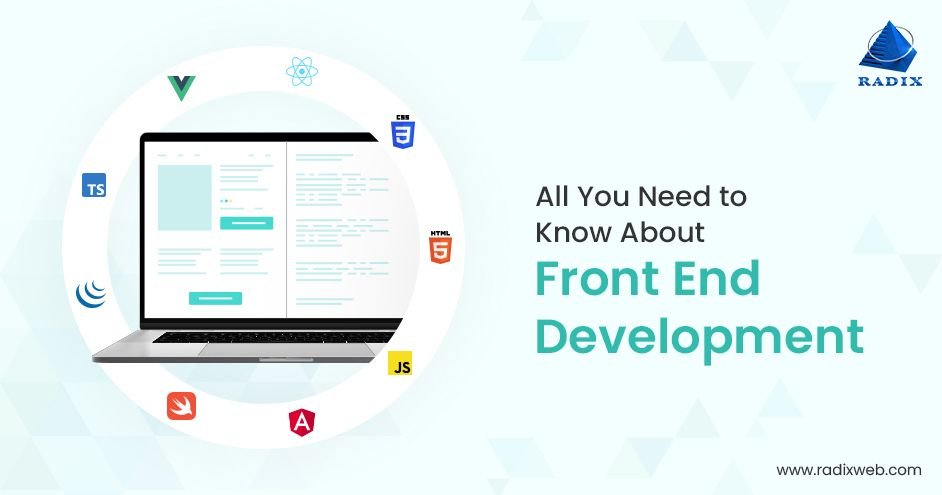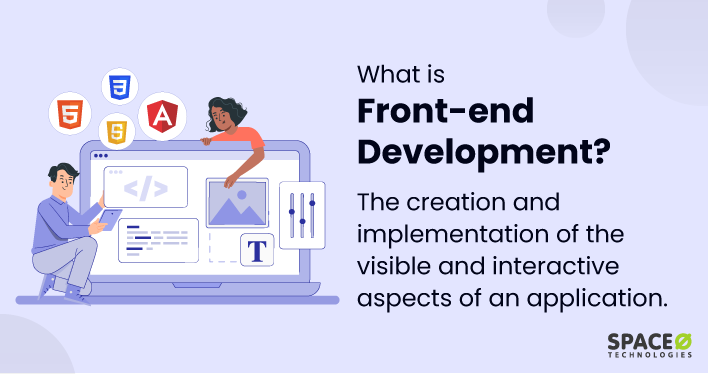Introduction
Front-end development—if you’ve ever been curious about how websites and apps look, feel, and function on the user’s side, this is your starting point! In today’s tech-driven world, front-end development plays a central role in crafting interactive and engaging digital experiences. With user expectations on the rise and the digital landscape constantly evolving, front-end development isn’t just coding; it’s a creative and technical balance that defines the success of digital products. This article dives into what front-end development is, the skills you’ll need to succeed, and why it’s one of the most exciting fields in tech today.
Understanding Front-End Development

So, what is front-end development, exactly? At its core, front-end development refers to everything that users interact with on a website or app. It’s about bringing visual designs to life through code, creating a seamless and enjoyable user experience. Think of it as the “face” of a website—everything you see, click on, or interact with is the result of front-end development.
While the front end is what users see, the back end is where the data lives, powering all that functionality. Together, these two parts make up web development, but front-end developers focus solely on the user-facing side.
Front-end development relies on three main coding languages: HTML, CSS, and JavaScript. HTML provides the structure, CSS adds style, and JavaScript brings interactivity. Front-end development might sound simple at first glance, but it’s incredibly nuanced, requiring careful attention to design details and an understanding of user experience.
Essential Skills for Front-End Developers
To dive into front-end development, you’ll need a mix of foundational and technical skills. Let’s break down the essentials:
- HTML, CSS, and JavaScript: These three are the backbone of front-end development. HTML (HyperText Markup Language) is used for structuring content, CSS (Cascading Style Sheets) for styling, and JavaScript for adding interactivity. They’re the first languages every front-end developer should master.
- Responsive Design: With users accessing websites on everything from large monitors to smartphones, creating responsive designs that adapt to different screen sizes is crucial. You’ll need to know how to use CSS frameworks like Bootstrap or Tailwind CSS to make designs that look great on any device.
- Accessibility: Ensuring that everyone, including users with disabilities, can use your site is not just good practice; it’s essential. Accessibility includes practices like using semantic HTML tags and creating keyboard-navigable designs.
- Version Control (Git): Version control is a must-have skill for any developer. Git helps you keep track of changes, collaborate with others, and roll back to previous versions if something goes wrong. Platforms like GitHub and GitLab are essential tools for sharing and managing code.
- Front-End Frameworks: Frameworks like React, Angular, and Vue help you create complex user interfaces more efficiently. These tools are widely used in the industry, so knowing at least one of them will give you an edge.
- Cross-Browser Compatibility: Not all browsers interpret code the same way, so you’ll need to test and tweak your code to ensure it works across browsers like Chrome, Firefox, Safari, and Edge.
With these skills, you’re well on your way to building impressive, user-friendly websites that make a real impact.
Popular Front-End Development Tools and Technologies

The world of front-end development is rich with tools to make your life easier. Here’s a breakdown of the most popular ones:
- Text Editors: Tools like Visual Studio Code and Sublime Text are the go-to editors for front-end developers. They come with features that make coding easier, like syntax highlighting, auto-completion, and integrated terminal.
- Front-End Frameworks: JavaScript frameworks like React, Angular, and Vue are incredibly popular for creating responsive, dynamic web applications. Each has its own strengths—React, for instance, is great for large applications with lots of components, while Vue is known for its simplicity.
- Responsive Design Tools: Frameworks like Bootstrap and Tailwind CSS provide a collection of ready-made components and layout structures, making it easy to create responsive designs without writing tons of custom CSS.
- Build Tools: Tools like Webpack and Babel help you optimize and bundle your code for faster loading times. They’re essential for preparing your code for production, especially when working with large projects.
- Testing and Debugging: Chrome DevTools is invaluable for checking your code’s performance and identifying issues. For more thorough testing, tools like Jest and Mocha allow you to write tests that ensure your code works as expected.
These tools make front-end development efficient and allow you to build, test, and deploy projects smoothly.
The Front-End Development Process: From Design to Code
Front-end development isn’t just about coding; it’s also about turning a design into a functional website. Here’s how the process typically goes:
- Design Phase: It often starts with a design team creating mockups in tools like Figma or Adobe XD. These mockups show the layout, color scheme, fonts, and overall look and feel of the site.
- Prototyping and Wireframing: Before coding begins, developers may use prototypes or wireframes to outline the website’s structure and flow. This helps to identify any potential issues early in the process.
- Coding the Layout: Using HTML and CSS, developers start by building the basic structure and styling of the site, ensuring it matches the design mockups.
- Adding Interactivity: JavaScript is used to make the site interactive—things like sliders, pop-up modals, and real-time updates fall into this phase.
- Testing and Iteration: Front-end development requires a lot of testing. Developers test the site across different devices and browsers to make sure it works seamlessly, making tweaks as necessary.
- Collaboration with Back-End Developers: Front-end and back-end developers work together to ensure data flows smoothly, such as when users submit forms or interact with features that require back-end support.
This process is iterative, with developers revisiting and refining their code until the site is fully functional and user-friendly.
Career Path and Opportunities in Front-End Development

The career path for front-end developers is as diverse as the field itself. Most start with an entry-level role, such as Junior Front-End Developer or UI Developer, where they work on smaller projects and gain foundational experience. As they progress, they may move into roles like Front-End Developer or Front-End Engineer, working on more complex projects and possibly mentoring juniors.
With experience, you can pursue senior-level roles or specialize in areas like UI/UX Design or Front-End Development with React. There’s also a growing demand for freelance front-end developers who work on a project-by-project basis. Salaries vary, but experienced front-end developers in high-demand locations can command lucrative compensation.
Future Trends in Front-End Development
The future of front-end development is exciting and filled with opportunities to innovate:
- Progressive Web Apps (PWAs): PWAs are web apps that behave like native apps, providing a smoother experience for users on mobile. PWAs are expected to grow as users look for fast-loading, reliable apps that work offline.
- User-Centered Design and Accessibility: Front-end developers are increasingly focused on making websites accessible and user-friendly. Expect to see more tools and standards that help developers create accessible experiences.
- AI in Front-End Development: Artificial intelligence is making its way into front-end development through tools that suggest code, optimize layout, and personalize user experiences. This trend will continue as AI capabilities improve.
- Low-Code and No-Code Platforms: While they won’t replace traditional front-end developers, these platforms allow non-developers to build basic sites and apps, which could change the way small projects are handled.
- Evolving JavaScript Frameworks: Frameworks are constantly evolving. React, Angular, and Vue continue to improve, and new frameworks will emerge, adding more functionality and flexibility to front-end development.
Front-end development is always evolving, making it a career filled with constant learning and innovation.
Conclusion
Front-end development is a dynamic, ever-evolving field that lies at the intersection of design and technology. It’s where creative vision meets coding, and every button, transition, and page layout contributes to an enjoyable user experience. If you’re passionate about design, code, and crafting intuitive digital experiences, front-end development could be your ideal career path. Ready to start building? Grab your favorite code editor and start experimenting—there’s no better way to learn than by doing! For more insights, explore Tip Code X to access valuable resources and expert advice on web development.
Additional Resources for Further Learning
For those looking to dive deeper into the field, here are some excellent resources:
- MDN Web Docs – Front-End Development Curriculum: A structured guide by Mozilla for essential front-end skills and best practices【14†source】.
- CSS-Tricks: Founded by Chris Coyier, CSS-Tricks is a go-to resource for front-end development tricks and
Code tutorials. Includes tips for essential front-end topics like CSS, Flexbox, and animations.
